Sequoia National Park California: 1st Time Visitor Guide
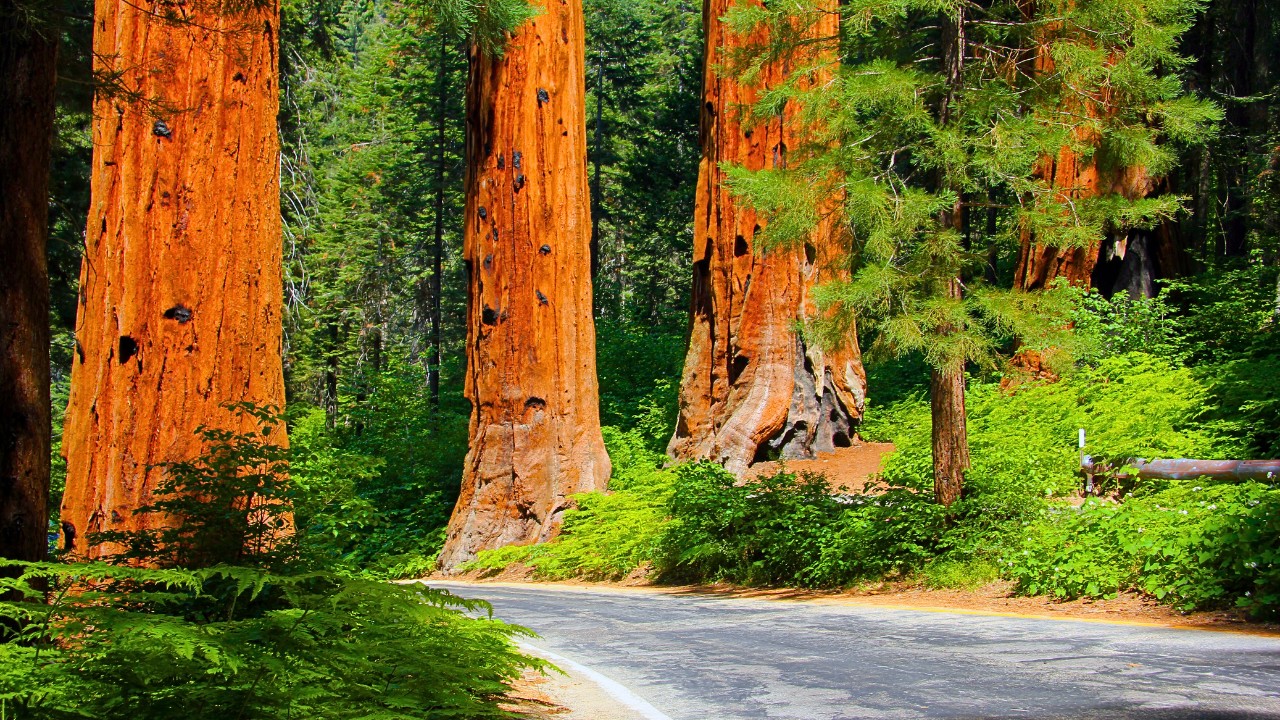
Stepping into Sequoia National Park feels like walking among ancient giants. I’ve been to this park and it’s hard to believe such a place exists until you’re there. Located in the southern Sierra Nevada mountains of California, this awe-inspiring destination is home to the world’s largest trees, deep canyons, granite peaks, and scenic alpine landscapes. Whether you’re coming to see the towering General Sherman Tree or hike through high-elevation meadows, this guide is tailored to help first-time visitors make the most of their trip.
Overview
Sequoia National Park protects over 400,000 acres of wilderness and is connected to Kings Canyon National Park. The park is famous for its groves of giant sequoia trees, including the General Sherman Tree, the largest tree by volume on Earth. Beyond the trees, visitors will find rugged backcountry trails, peaceful meadows, marble caves, and scenic overlooks offering views that stretch for miles.
- Location: Tulare County, California
- Elevation Range: 1,370 ft to 14,494 ft (Mount Whitney)
- Highlights: Giant Forest, Moro Rock, Crystal Cave, High Sierra Trail
Photos
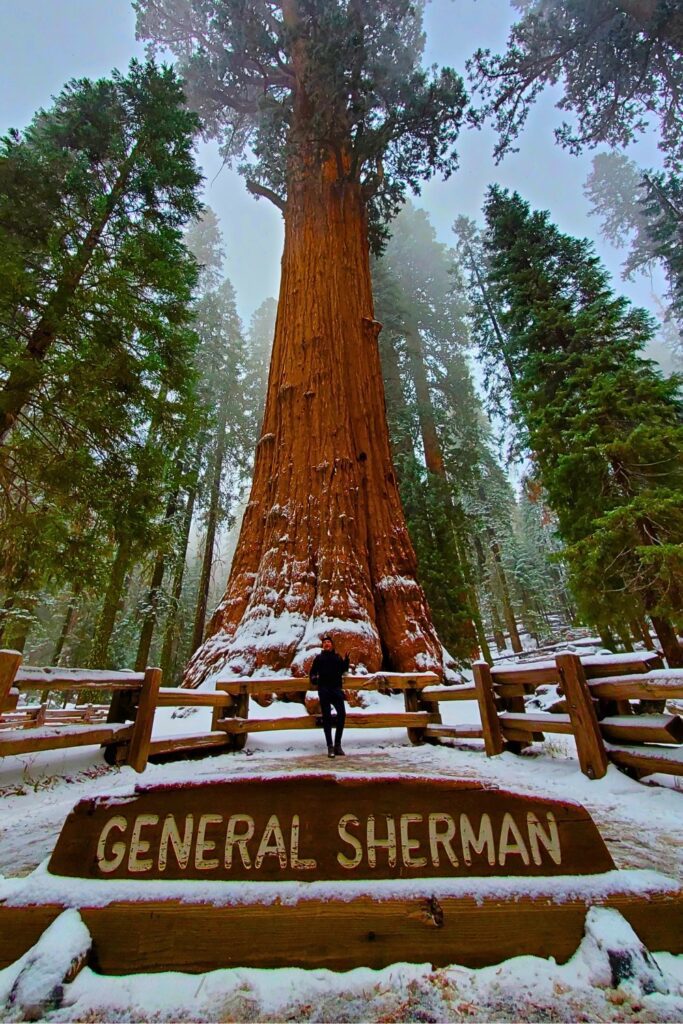
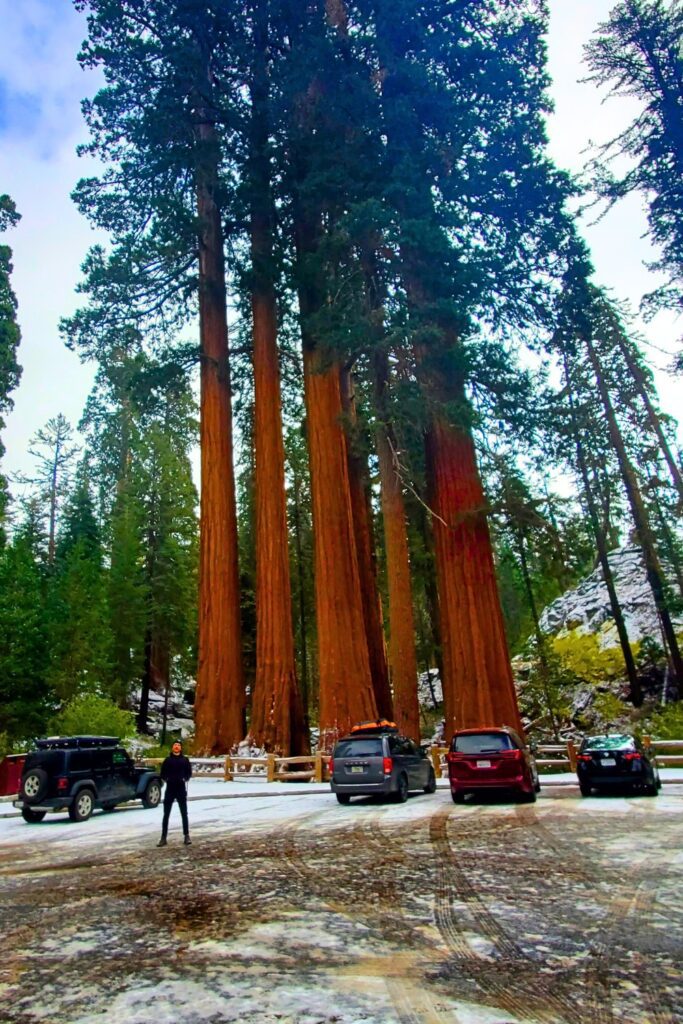
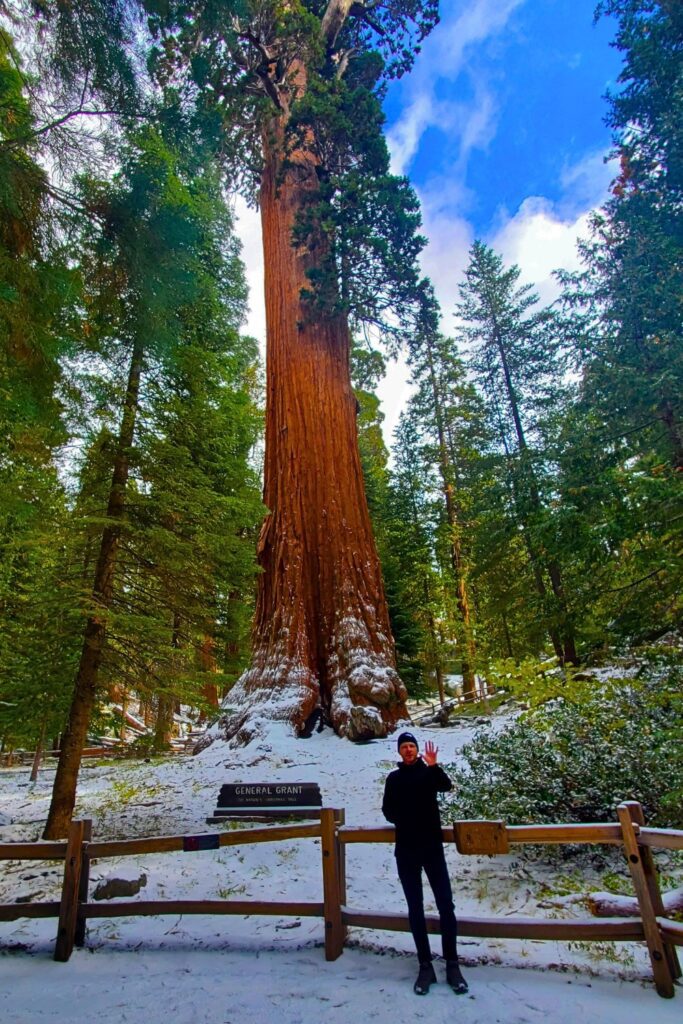
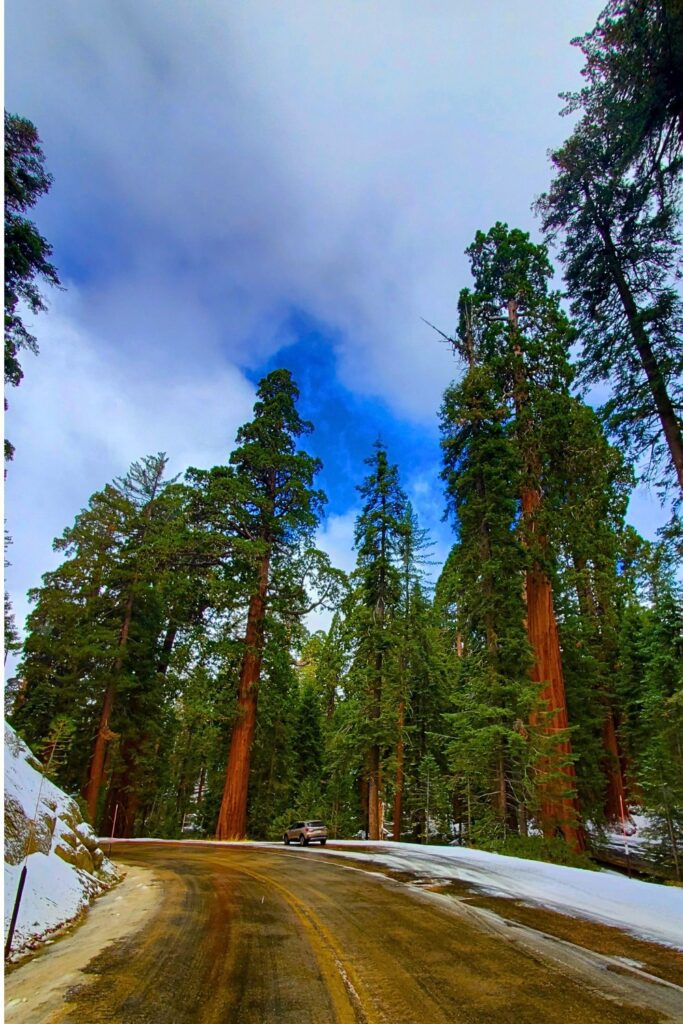
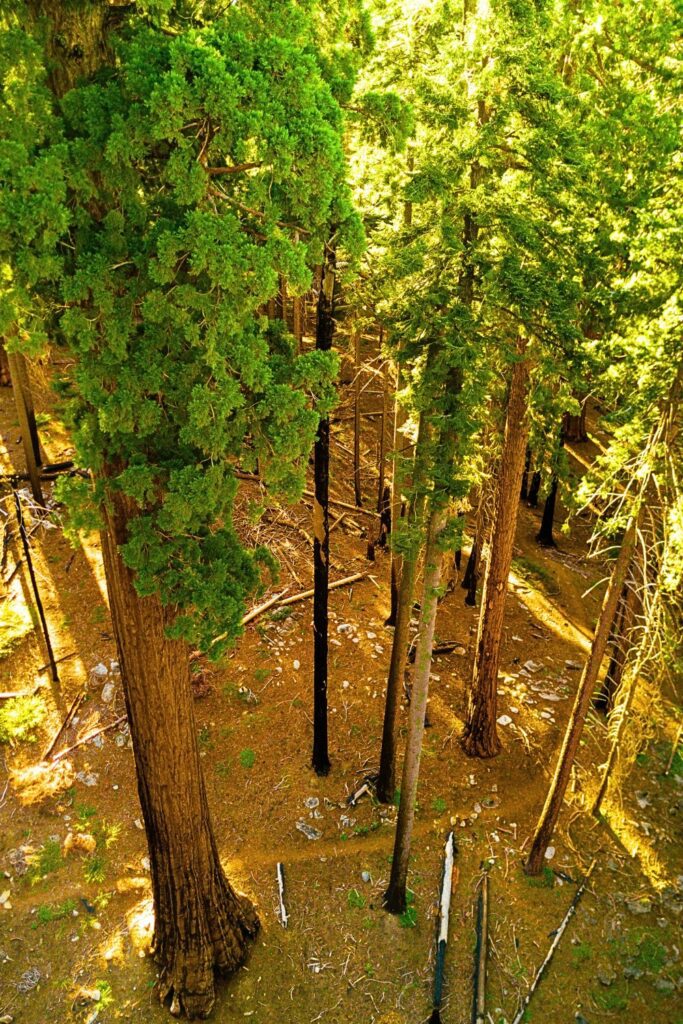
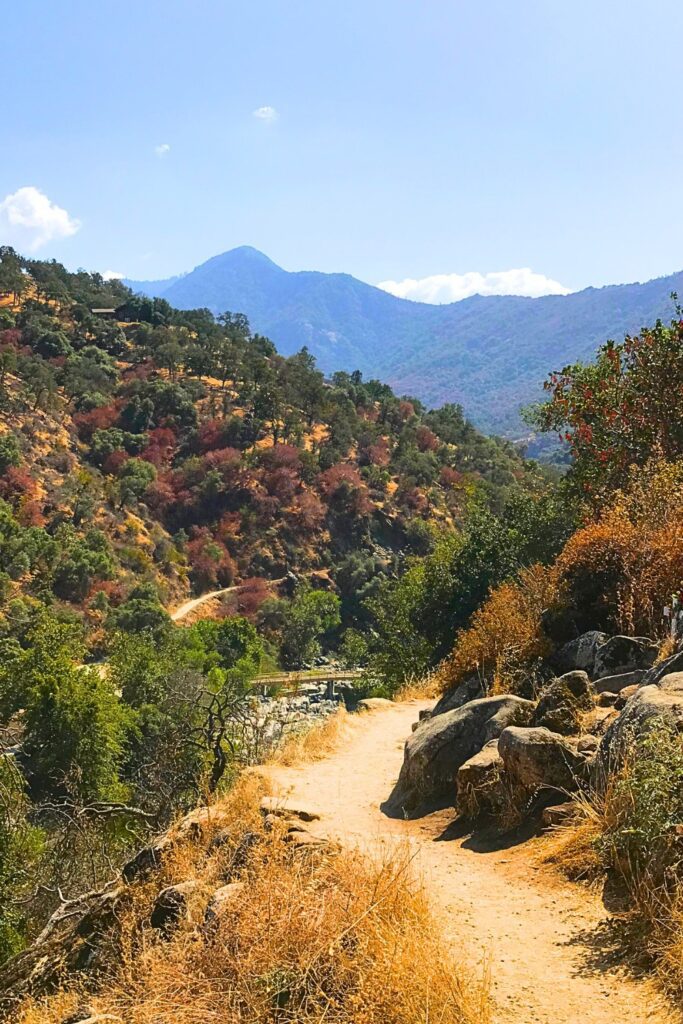
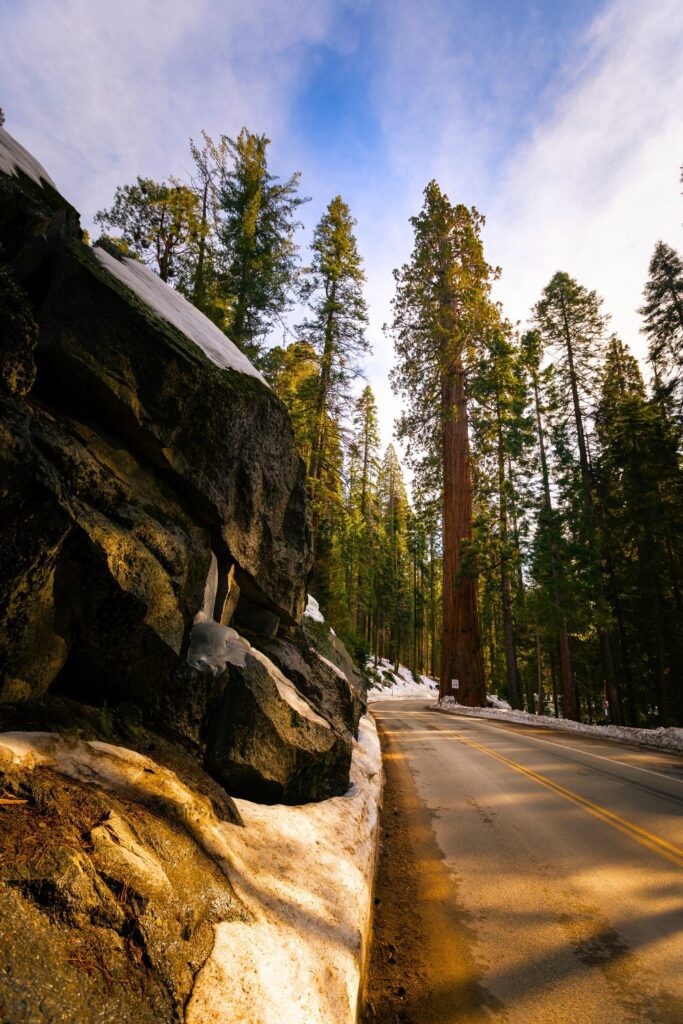
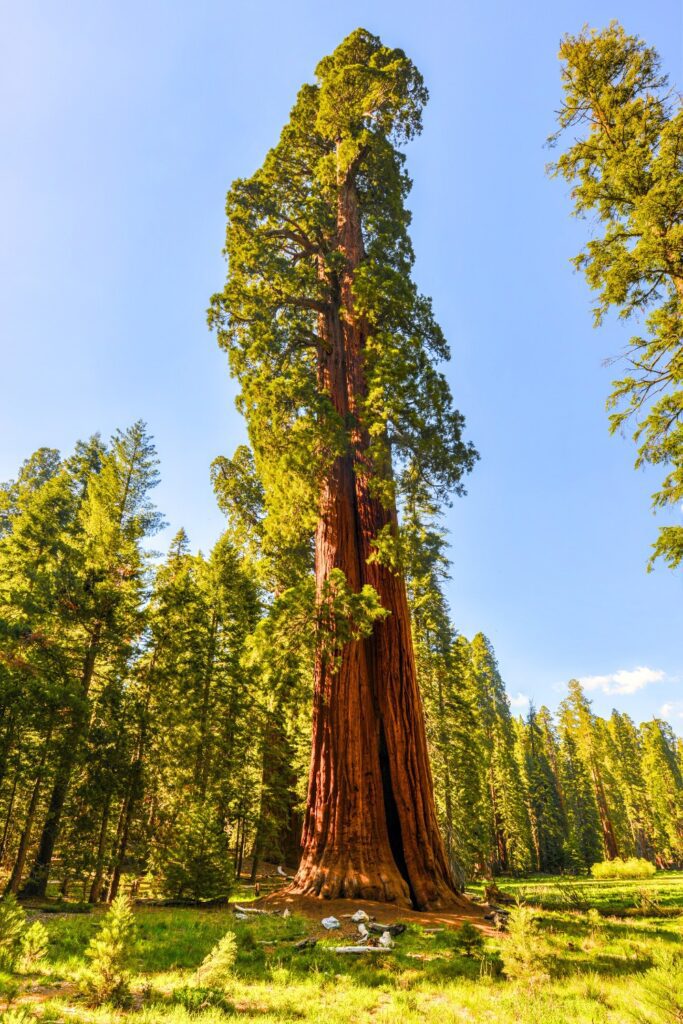
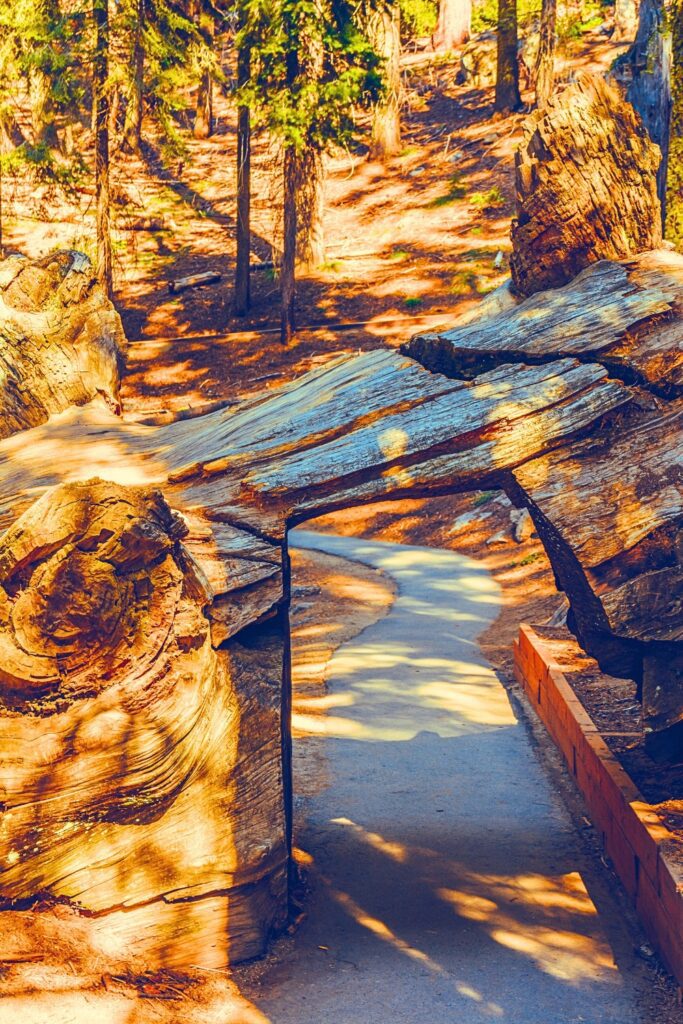
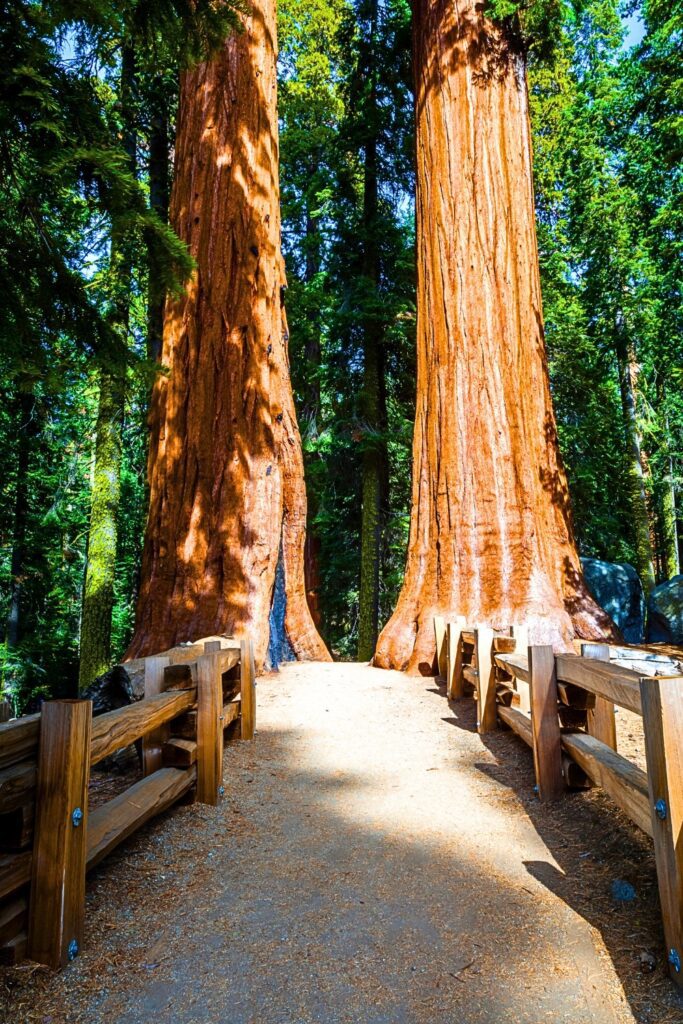
How to Get There
By Car:
- From Los Angeles: Approx. 4.5 hours (220 miles) via I-5 N and CA-198 E
- From San Francisco: Approx. 5 hours (280 miles) via I-580 E and CA-99 S
- From Fresno: Approx. 1.5 hours (75 miles) via CA-180 E
Nearest Airports:
- Fresno Yosemite International (FAT) – Closest major airport
- Visalia Municipal Airport (VIS) – Regional option
- LAX or SFO – For longer trips
Entrance Stations:
- Ash Mountain Entrance (CA-198) – Closest to Giant Forest
- Big Stump Entrance (CA-180) – Best if combining with Kings Canyon
Best Times to Visit
- Spring (April–June): Wildflowers bloom, waterfalls flow, and trails begin to open.
- Summer (July–September): Peak season with full access to high-elevation hikes and visitor centers.
- Fall (October–November): Fewer crowds, vibrant foliage, and cooler weather.
- Winter (December–March): Quiet and snow-covered—great for snowshoeing, but limited road access.
Tip: Roads can be snowy or icy through May, especially at higher elevations. Always check current conditions before traveling.
10 Best Things to Do
This park is full of wonders and things to do and while the top 10 listed here are awesome, I highly recommend checking out this Tripadvisor post on Sequoia National Park for even more amazing recommendations:
- See the General Sherman Tree – The largest tree on Earth by volume (276 feet high).
- Climb Moro Rock – A granite dome with panoramic views of the Great Western Divide. This is one of the best Sequoia National Park hikes to explore.
- Explore the Giant Forest – Home to hundreds of massive sequoias.
- Hike to Tokopah Falls – A scenic 1.7-mile trail leading to a 1,200-foot waterfall.
- Tour Crystal Cave – A marble cave open to guided tours in summer.
- Drive the Generals Highway – Connects Sequoia with Kings Canyon National Park and offers jaw-dropping scenery.
- Visit the Tunnel Log – Drive through a fallen giant tree from 1937.
- Check out Beetle Rock – A flat granite outcrop ideal for sunset views.
- Walk the Big Trees Trail – A peaceful loop around Round Meadow.
- Stargaze in the Foothills – The park has some of the darkest skies in California.
5 Hidden Gems
- Crescent Meadow – A quiet trail loop through forest and open meadow; often overlooked for its peaceful beauty.
- Hanging Rock – A short walk from Moro Rock offering a unique photo op and fewer crowds.
- Bear Hill Trail – A lesser-known forest trail that feels remote despite being close to Giant Forest.
- Lost Grove – A small but pristine sequoia grove you’ll likely have to yourself.
- Marble Falls Trail – A moderate springtime hike with wildflowers and a waterfall near the foothills region.
1–5 Day Sample Itinerary
Day 1: Arrival + Intro Trails
- Enter via CA-198
- Walk Big Trees Trail
- Visit General Sherman Tree
- Check in at nearby lodge or campground
Day 2: Iconic Spots
- Climb Moro Rock early
- Visit Crescent Meadow and Tunnel Log
- Hike Tokopah Falls
- Sunset at Beetle Rock
Day 3: Kings Canyon Add-On
- Drive Generals Highway to Kings Canyon
- Explore Grant Grove and General Grant Tree
- Optional: Roaring River Falls and Zumwalt Meadow
Day 4: Adventure Day
- Tour Crystal Cave (advance tickets required)
- Hike Alta Peak or Lakes Trail (for experienced hikers)
- Evening wildlife watching
Day 5: Hidden Gems + Departure
- Early walk to Hanging Rock or Bear Hill Trail
- Scenic drive out
- Stop for photos along the foothills section
Packing List
If you need one or more of the following items on the list below, you can get them on my Amazon gear store:
- Layered clothing (temps vary with elevation)
- Reusable water bottles or hydration pack
- High-SPF sunscreen and sunglasses
- Trail snacks and meals (food is limited inside the park)
- Hiking shoes or boots with good grip
- Map or offline GPS (limited signal)
- Flashlight or headlamp
- Trekking poles (optional but helpful for steep trails)
- Park pass or credit card for entrance fees
- Bug spray (especially in spring/summer)
- Entrance ticket or America the Beautiful Pass (full access to any US National Park for 1 year)
Where to Stay
There’s several options outside the park and one major one inside. See options.
Things to Know Before You Go
- Entrance Fee: $35 per vehicle (valid for 7 days) or use the America the Beautiful Pass ($80/year)
- Limited Cell Service: Download maps or use paper trail guides
- No Gas in the Park: Fill up in Three Rivers or Dunlap before entering
- High Elevation: Take it slow to avoid altitude sickness, especially if hiking above 8,000 feet
- Bear Safety: Store all food in bear lockers; bear sightings are common
- Weather Shifts Fast: Snow in June isn’t unusual, check forecasts ahead of time
- Pets: Not allowed on most trails or in wilderness areas
Related
Final Thoughts
Sequoia National Park is one of California’s crown jewels, a place where time seems to slow under the shadow of ancient trees and glacier-carved peaks. Whether you have one day or five, you’ll leave inspired by nature’s scale, beauty, and serenity. Use this guide to craft your ideal itinerary and soak in one of the most majestic landscapes in the U.S.

Very nice, thank you.
I wrote a “special interest” report on California’s national parks in elementary school, in 1961 (went there in 1960). Your page brings back fond memories.
Climate change, wildfires, and the pitter-patter of billions of touristic feet are damaging the sequoias and may yet kill them before their expected lifespan. But you might like knowing that they grow well in the UK, and the British are 𝐰𝐢𝐥𝐝𝐥𝐲 enthusiastic about planting them. I expect the Irish, French, Germans, an occasional Dutchperson or Dane, and many others will do the same. If you have friends in western and northern Europe, you could hardly give them a better gift than a sequoia seedling. Or twenty?
Normally, I’m suspicious of introducing a species to a different location, but those are such wonderful trees that I can’t badmouth it.